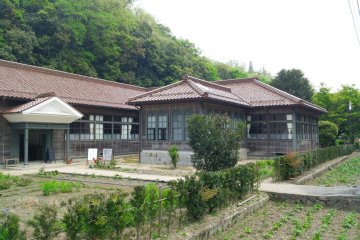The Tottori Sand Museum offers visitors a unique and immersive artistic experience. Inspired by the area’s natural connection to sand, most notably the nearby Tottori Sand Dunes, the museum is a permanent indoor space devoted solely to sand sculpture. Since opening in 2006, it has earned widespread recognition for its impressive, large-scale exhibitions that highlight the creative potential of sand as a medium.
As part of the museum’s ongoing “Travel Around the World in Sand” series, the current exhibition (on view until January 4, 2026) centers on “Japan.” It showcases intricate sand sculptures crafted by international artists, each offering a unique perspective on the country’s rich and multifaceted heritage, from ancient mythology to modern pop culture.
Among the standout works is “Japanese Mythology: Creation of the World and the Gods” by Lithuanian artist Andrius Petkus. Inspired by Japan’s oldest texts, the Kojiki and Nihonshoki, the piece showcases the creation of the first island of Japan and includes dramatic scenes like Shinto deity Susanoo’s legendary battle with an eight-headed serpent.
Visitors are transported to the Heian period (794–1185) through Belgian sculptor Enguerrand David’s recreation of the Phoenix Hall of Byodo-in, near Kyoto. The Amida Buddha, the central figure of Pure Land Buddhism, is meticulously recreated and the illusion of the hall floating on water adds to the artwork’s beauty.
Italian artist Leonardo Ugolini captures the country’s World Heritage Sites, such as Mount Fuji, Himeji Castle, and Kiyomizu-dera, while a collaborative piece by artists from Canada and the Netherlands brings to life the Edo period (1603–1867). Their work includes depictions of powerful Tokugawa shoguns and the vibrant merchant culture of streets at the time.
A pivotal turning point in Japanese history, the arrival of the black ships led by Commodore Perry in 1853, is also presented in intricate detail. Other exhibits showcase the bold designs of ukiyo-e woodblock prints, including one of Katsushika Hokusai’s famous works, “The Great Wave off Kanagawa,” and the dramatic portraits of actors created by Toshusai Sharaku in the late 18th century.
Bringing the journey to a joyful close, Japanese artist Nozomu Daikuzono presents a playful tribute to modern kawaii culture through beckoning maneki-neko cats, which are symbols of good fortune.
The Tottori Sand Museum’s tribute to Japan highlights not only the incredible beauty of sand but also the historical and cultural aspects of the country that make it such a unique place.
For more details, check out the official site: www.sand-museum.jp/en














